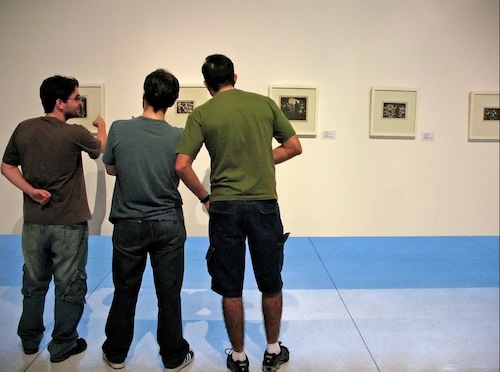One of the enduring fixtures of an arts education is the "critique," a group evaluation of students' work. Traditionally some posturing, passive-aggression and even unkindness can be expected during a critique, even from a teacher, and the experience can be fraught, confusing and discouraging to a student. But it is necessary to hear what others think of your work.

Photograph by Herval Freire
The word "criticism" has come to invariably indicate disapproval. Criticism is rarely acknowledged as personal, even when it is, but is usually offered as an assertion of standards you may have violated (the criticism implying that you both transgressed and were ignorant of the "rules" in the first place). But if you have overlooked something you should be aware of, it's good to know that, even if it's hard to hear. The work of artists and teenagers, those with especially pressing inner lives, can be elliptical, self-referential, obscure or entirely indigestible when they get stuck in their own heads (ask any high school poetry teacher). Anyone who makes art needs to know what other people actually see in their work.
The painter Julian Schnabel recounts the perils of listening to advice, however well-intentioned:
I made a painting called "Red Cross Painting for Norman Fisher" that had on it a nurse's hat made of plaster. David Diao and another painter, Gary Stephan, came over to my studio and looked at it. Because it seemed extra to them, they both thought I should cut out the nurse's hat. I took their advice and ruined the painting...Thinking about the nurse's hat now, I realize what I learned: never listen to anybody when it comes to being responsible for your own paintings. It's a mistake for young artists to want to please older ones. They're going to make you take out of your paintings the very things that most characterize them as yours. You might think that someone is really smarter than you are, or wiser, or more experienced, and they may be. But you can't listen to them because nobody knows better than you what you need to do. Most older artists are going to try to get you to conform to the standards that you are out to destroy anyway.
You have to learn to have your work looked at, and that means being willing to make yourself a bit vulnerable, and at the same time not worrying too much about what people think and not reflexively adjusting to expectations. Your work might not look entirely like what others expect, and they might be a bit put out by that, which can sound like criticism. As Julian Schnabel discovered, too much concern for others' opinions has a leveling, conforming and inhibiting influence on your work.
A teacher's job is to help students get across what they wish to say -- to understand their intentions and to help them find a way to express them. Criticism should strengthen and support what is working; disapproval doesn't really have much of a place.
You've got to accentuate the positive
eliminate the negative
Latch on to the affirmative
But don't mess with mister inbetween
- Johnny Mercer